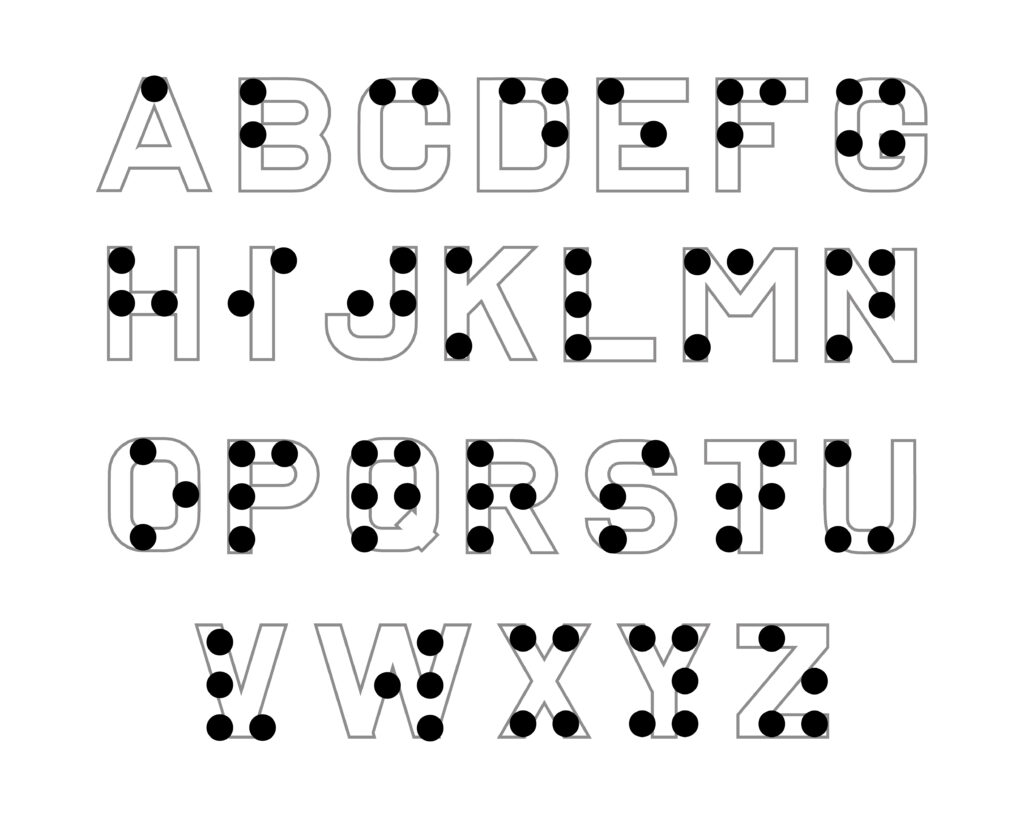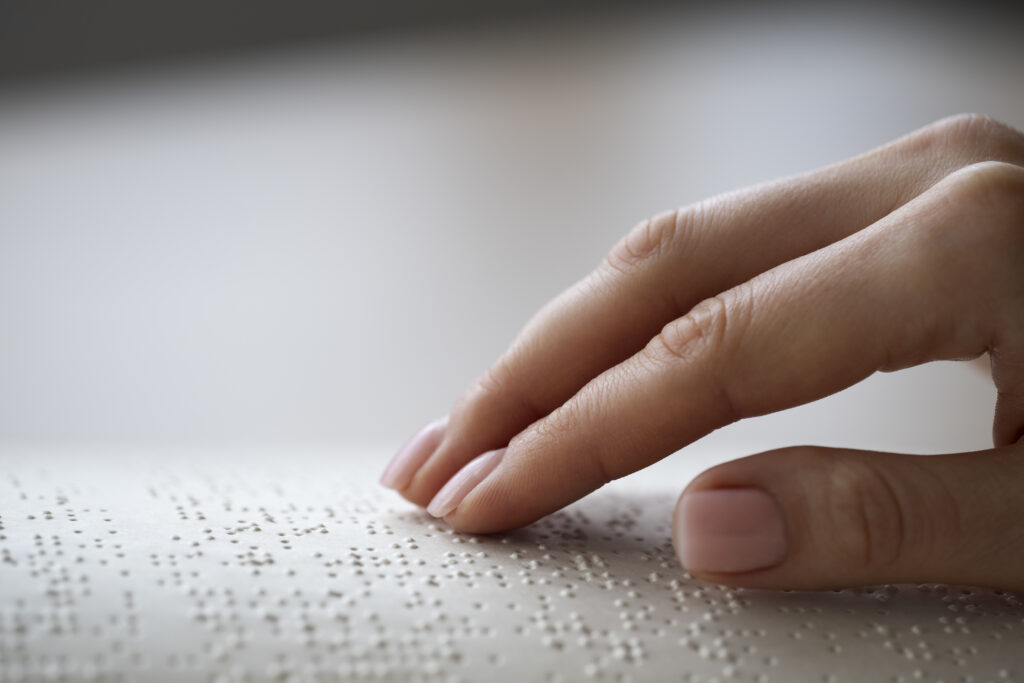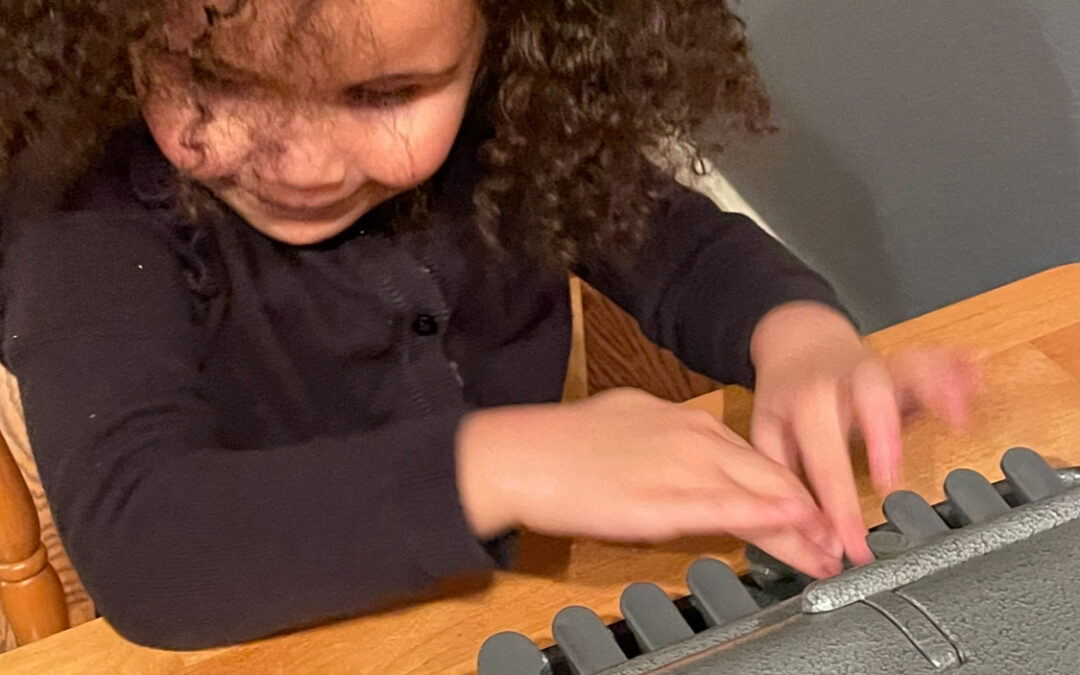Braille is a system of reading used by people who are visually impaired. It employs a pattern of raised dots in a “cell” of 3 rows by 2 columns to represent a letter, number, punctuation mark and sometimes even a whole word.

Image by hannazasimova on Freepik
These patterns of raised dots can be made by a braillewriter which pushes a sharp instrument against paper creating a bulge on the opposite side. These bulges or dots can be felt by the tips of the fingers.

Image by Freepik
Some students who are visually impaired will spend time learning how to recognize the patterns of the dots corresponding to each letter, number, and symbol. Using this “code”, called Braille, people can translate books and other written materials of a wide variety of languages into something that can be “read” with your fingers when your eyes can’t see the page.
Not all people with visual impairments will learn to read Braille. Some may use large print or audio options. Even though Braille is primarily taught to people with visual impairments, anyone can learn to read it. Others may use Braille translators to help increase exposure. Beginner learners can start recognizing the patterns using an egg carton and plastic eggs or muffin tin and tennis balls. For those with access to braillewriters, there are plenty of activities for fun and learning combined.

